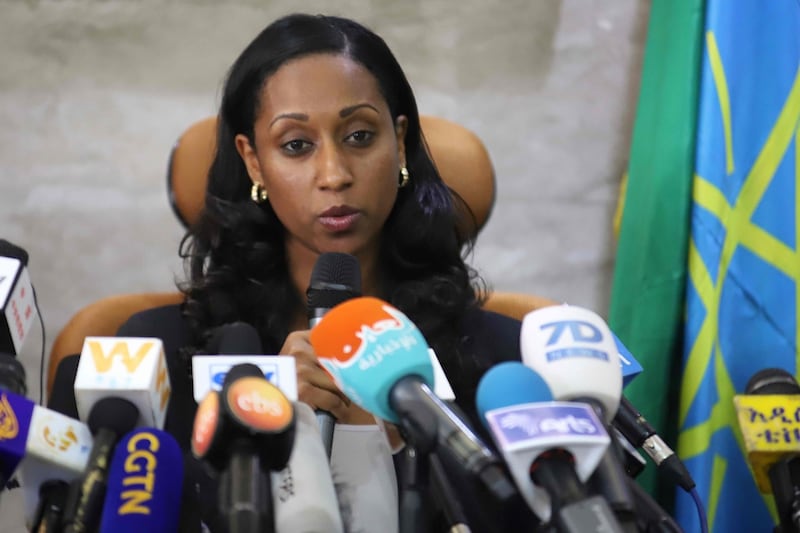Pilots of an Ethiopian Airlines jet wrestled with controls to stay aloft but plunged to the ground after restoring current to a computer system that was ordering the nose down because of faulty sensor data, a preliminary report showed on Thursday.
The Boeing 737 MAX hit an airspeed as high as 500 knots or 926km/h, well above its operational limits, before cockpit data recordings stopped as the plane crashed on March 10th, killing all 157 passengers and crew.
“Most of the wreckage was found buried in the ground,” said the report by Ethiopia’s Aircraft Accident Investigation Bureau.
The doomed flight crashed six minutes after take-off from Addis Ababa in clear conditions.
Boeing’s top-selling aircraft has been grounded worldwide since the disaster, which came just five months after a Lion Air 737 MAX crash in Indonesia that killed 189. An initial report into that accident also raised questions about the jet’s software, as well as training and maintenance.

Ethiopia urged Boeing to review its flight control technology and said pilots of the state carrier had carried out proper procedures in the first public findings on the crash.
“The crew performed all the procedures repeatedly provided by the manufacturer but was not able to control the aircraft,” transport minister Dagmawit Moges told a news conference, presenting the outlines of a preliminary report.
Boeing Co, whose shares rose 2.4 per cent on Thursday but were still below their level before the crash, said its software fix for its anti-stall system would give pilots the authority to always override the system if activated by faulty sensor data.
Families of the victims, regulators and travellers around the world have been waiting for signs of whether the two crashes are linked, and the extent to which Boeing technology and the actions of the Ethiopian Airlines pilots played a role.
Regulator direction
Ethiopian investigators did not blame anyone for the crash, stressing the importance of international rules requiring civil probes to focus on recommendations for safer flight.
A final report is due within a year.
But in a clear indication of where Ethiopian investigators are directing the attention of regulators, they cleared the pilots of using incorrect procedures and issued two safety recommendations focused on the recently introduced aircraft.
They suggested that Boeing review the controllability of the 737 MAX systems and that aviation authorities confirm any changes before allowing that model of plane back into the air.
“Since repetitive uncommanded aircraft nose down conditions are noticed . . . it is recommended that the aircraft control system shall be reviewed by the manufacturer,” Ms Dagmawit said.
The nose-down commands were issued by Boeing’s so-called MCAS software. The preliminary report into the Lion Air disaster suggested pilots lost control after grappling with MCAS, a new automated anti-stall feature that repeatedly lowered the nose of the aircraft based on faulty data from a sensor.
The Federal Aviation Administration, which has come under fire over the way it decided to certify the plane and its MCAS software, cautioned the investigation had not yet concluded.
“We continue to work towards a full understanding of all aspects of this accident. As we learn more about the accident and findings become available, we will take appropriate action,” the US agency said in a statement.

Role of software
Ethiopian Airlines said its crew had followed all the correct guidance to handle a difficult emergency.
However, the report could spark a debate with Boeing about how crew members responded to problems triggered by faulty data from an airflow sensor, particularly over whether they steadied the plane before turning key software off.
Questions on whether the pilots had levelled out the plane before disengaging MCAS and how many times MCAS activated were not answered in a news conference that lasted about 40 minutes.
The New York Times quoted Ms Dagmawit as saying pilots turned MCAS off and on, which is not the step recommended in published Boeing procedures telling crew to leave it off once disabled, though there is growing debate among safety experts about what unstable conditions may have prompted such an unusual step.
Most accidents take months of analysis because of the need to trace backwards to find a root cause from tangled evidence.
“There is a big difference between having the data and knowing the cause,” a senior European investigator said.
Officials denied reports of tensions between Ethiopian officials and US and other foreign investigators accredited to the probe.
“We don’t have any reservations from different stakeholders who were engaged in the investigations,” chief investigator Amdye Ayalew Fanta said.
Following a previous Ethiopian Airlines accident off Beirut in 2010, Addis Ababa authorities rejected the conclusions of a Lebanese investigation citing pilot error and suggested the aircraft had exploded in a possible act of sabotage.
Aviation safety analyst Paul Hayes said deeper investigation would delve into the role played by software and how pilots were able to respond, and said he hoped scars from the 2010 dispute would not get in the way of a comprehensive investigation.
“Pilots shouldn’t have to cope with such an emergency situation. We need to understand what are the factors that meant these two crews were overcome,” said Hayes, safety director at UK-based consultancy Flight Ascend.
“It is unusual for there to be a single cause,” he added.
Boeing said on Wednesday it had successfully tested an update of MCAS software designed to make it easier to handle. – Reuters














